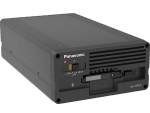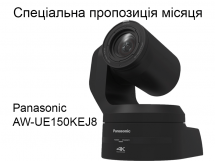You can daisy chain up to six AU-XPD3 devices, which enables downloading multiple cards simultaneously. Daisy chaining will lower the top speed of each device on the chain, but transferring multiple cards at the same time will shorten the overall download process. The unit requires AC power to function.
Transferring from a single 512GB expressP2 B-series card takes about 7 minutes, and if you have one AU-XPD3, then it will take about 14 minutes to transfer from two cards, but when you daisy chain two units together the maximum speed of both units drops to about 8.8 Gb/s, enabling you to transfer a 512GB card in about 8 minutes. If you are transferring from two 512GB cards, each one will take about 8 minutes, but since they are transferring simultaneously you will be done much faster than if you were transferring the cards one at a time.
expressP2 B Series versus espressP2 A Series
The B-series cards support a transfer speed of up to 10 Gb/s and the A-series cards are limited to 2 Gb/s. The AU-XPD1, which is USB 3.0, is capable of transferring data from an A-series card at up to 2.4 Gb/s. The AU-XPD3 is designed and tuned for B-series cards, and can transfer data more than four times faster from a B-series card than an AU-XPD1.
To take full advantage of the AU-XPD3, you need a computer with full Thunderbolt 3 ports.
SPECS:
|
Card Slot
|
1 x expressP2
|
|
Compatible Memory Cards
|
expressP2 B
expressP2 A
P2
microP2 (using optional AJ-P2AD1G adapter)
|
|
Connectors
|
2 x Thunderbolt 3
|
|
Data Transfer Rate
|
expressP2 B-Series: 10.0 Gb/s
expressP2 A-Series: 2.0 Gb/s
P2: 1.2 Gb/s
microP2: 1.0 Gb/s (card reader adapter required)
|
|
Dimensions (WxHxD)
|
12.60 x 6.20 x 21.65 cm
|
|
Weight
|
1.2 kg
|
To discuss at a forum
|










